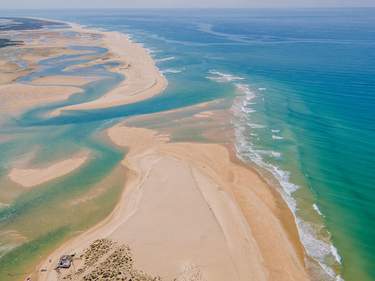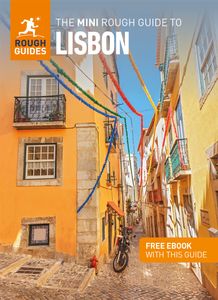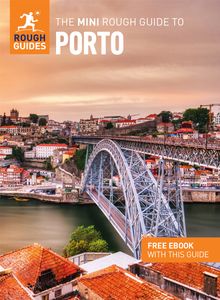Brief history
Sagres and its rugged cape, Cabo de São Vicente, were once thought to mark the edge of the known world, which is why Henry the Navigator is believed to have set up his school of navigation here in the fifteenth century. It was here too that the caravel was developed – a revolutionary boat that could sail further than any European had been before. During Henry’s lifetime, Portuguese navigators colonized the Azores and Madeira and began trading with ports along the west coast of Africa. After Henry’s death in 1460, his school continued to train and equip sailors who went on to become the most famous of Portugal’s great explorers: Vasco da Gama (1460–1524), who opened up the sea route to India; Pedro Álvares Cabral (1468–1520), who “discovered” Brazil; and Ferdinand Magellan (1480–1521), the first European to cross the Pacific. Once Lisbon became the main departure point for the Portuguese explorers, however, Sagres lost some of its importance and slipped back into obscurity. Its small sixteenth-century Fortaleza de Baleeira was damaged by Francis Drake in 1587 and further ruined in the 1755 earthquake; most of today’s town was built after tourism revived its fortunes in the 1960s.
The beaches
Most people spend their days in Sagres on one of the excellent beaches, five of which are within walking distance of the town. Three are on the more sheltered coast east of the fortress, with the best, Praia da Mareta, just five minutes’ walk southeast of the main square. Further on is the slightly scrubby harbour beach, Praia da Baleeira, but you’re better off walking another five to ten minutes over the cliffs above the harbour to the longest beach, Praia do Martinhal, which is particularly good for families and backed by a purpose-built resort. West of the fortress, Praia do Tonel is a wilder location, popular with surfers. It’s a longer walk to the beautiful Praia de Belixe, 2km down the road from Sagres to Cabo de São Vicente, which is overlooked by a small fortress (closed to the public). Wherever you swim, take care – there are some very strong undertows, especially on the west side of the fortress.
Sagres surfing
The west coast of the Algarve has gained a reputation as one of Europe’s best surfing destinations, with Sagres as its surfing capital. Its position at the bottom corner of Portugal means that there are nearly always excellent surfing conditions, whatever the weather. The swell “wraps” round Cabo de São Vicente, producing relatively gentle waves in the bays between Sagres and Lagos, ideal for the less experienced. With swell sizes of up to 5m, the beaches north of Cabo de São Vicente face the full brunt of the Atlantic so are best for experienced surfers – legs of the World Surfing Championships are held at nearby Praia do Amado. Indeed, it can be decidedly dangerous and inexperienced surfers are best off going with a surf school – which can give one-off lessons or courses from around €60 a day – or a surf camp, which throws in accommodation and transport to the best beaches. Top surf camps and schools in the Sagres region include freeridesurfcamp.com, algarvesurfschool.com, internationalsurfschool.com. If you use another outfit, check that it’s an approved surf school at algarvesurfschoolsassociation.com.
Cabo de São Vicente
The dramatic, cliff-fringed Cabo de São Vicente – Cape St Vincent – is the most southwestern point of mainland Europe. The Romans called this Promontorium Sacrum and thought the sun plunged nightly into the sea here – it later became a Christian shrine when the relics of the martyred St Vincent were brought here in the eighth century. Today, tourist stalls selling trinkets line the approach road to a lighthouse, one of the most powerful in Europe: there’s a small museum tracing the history of the lighthouse, from an original structure in the sixteenth century to the current one which dates from 1908. The other building is a ruined sixteenth-century Capuchin convent, which survived the 1755 earthquake but not the dissolution of the monasteries in 1834: its remaining walls today shelter a small shop and café.
The sea off this wild set of cliffs shelters the highest concentration of marine life in Portugal, including rare birds such as Bonelli’s eagle – there’s a birdwatching festival here in autumn. If you can, it’s worth visiting the cape at sunset, when the views are breathtaking.
St Vicent
St Vicent was born in Zaragoza in Spain in the third century AD and became the town’s deacon during the early days of Christianity in Iberia. He was later imprisoned in Valencia and sentenced to death in 304 AD during the days of Christian persecution. It is said that while he was being burned alive, the room filled with light and the voices of angels, and he was proclaimed a martyr and then a saint. In the eighth century, his remains – which had somehow survived the fire – were miraculously washed up in an unmanned boat piloted by ravens at what is now Cabo de São Vicente. Perhaps more credible is the theory that Christians took whatever was left of Vincent with them to flee invading Moors, arriving at the safe outpost of the Cape where they later built a chapel to house his remains. In 1173, Afonso Henriques, Portugal’s first Christian monarch, had the saint’s remains moved to Lisbon. Legend has it that the faithful ravens followed them to the capital, and guarded over him in the cloisters of Lisbon’s Sé (cathedral), until the last raven died in 1978. Today São Vicente remains Lisbon’s patron saint.



























